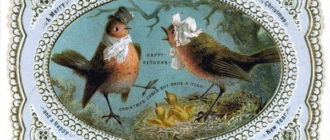
View of the monument to Peter I on Senate Square in St. Petersburg is a painting by the consummate master of associative masterpieces Vasily Ivanovich Surikov. The artist conveyed the spirit of the era with incredible accuracy through a detailed display of objects of architecture and objects of urban life.
Surikov’s painting: View of the monument to Peter I on Senate Square in St. Petersburg – the magical realism of a winter city
This is the first work of the painter outside the curriculum of the Art Academy. The canvas depicts an equestrian sculpture of the emperor and St. Isaac’s Cathedral in the moonlight. The gloomy silhouette of the Bronze Horseman contrasts sharply with the granite base on which it rises: granite silvered with light frost looks like an iceberg.
In the background, the pale moonlight is absorbed by the shadows of the night, and in the foreground it merges with the flickering of gas lamps. The snow cover is unusually bright in double light. The presentation of the terrain from a low point gives the masterpiece a special expressiveness. Thanks to this artistic technique, the architecture of the cathedral and the Bronze Horseman seem to hang over the viewer, creating a physical sensation of their grandeur. The dynamics of the picture is provided by sled carts and figures of people in long dresses, strolling along the square. The painter reliably conveyed the feeling of the Petersburg winter, with its humid air space, leveling the color and volumetric properties of objects.
Title of the painting: “View of the monument to Peter I on the Senate Square in St. Petersburg.”
Author: Vasily Ivanovich Surikov (1848-1916).
Year of writing: 1870
Size: 52 x 71 cm.
Style: Realism.
Genre: City landscape.
Technique: Oil painting.
Material: Canvas.
Location: Krasnoyarsk Art Museum named after V.I.Surikov, Russia.
Vasily Ivanovich Surikov is an outstanding master of Russian fine arts of the 19th-20th centuries.
This is a brilliant landscape painter, the author of grandiose historical works. His paintings reflect dramatic events in the life of the Russian people, the deeds of great personalities and the everyday life of ordinary people. Throughout his career, the artist showed in his works the social and political significance of the masses.
Surikov’s paintings attract with their epic plots, an abundance of human figures and reliable fixation of key moments in history. The masterpiece is presented by the author in two similar versions. The difference is observed only in the degree of illumination of the area.
The first work was created in the summer-autumn period on the basis of previously prepared sketches, and the master worked on the copy already in the winter, having the opportunity to create from nature. In the second picture, the illumination of the sky and snow increased, the silhouettes of the temple and the monument darkened. The granite pedestal under the horse is no longer covered with frost, but left dark. The wagons cast a purple shadow, and blue-pink reflections on the rest of the snow. The landscape, painted by Surikov from nature, is exhibited at the State Russian Museum and makes an indelible impression on the public.
The painting “View of the Monument to Peter I on Senate Square in St. Petersburg” by Vasily Surikov is an example of masterly mastery of the geometric play of light and shadow. The work demonstrates the amazing talent of the young painter and his restrained but deep love for the Northern capital.






